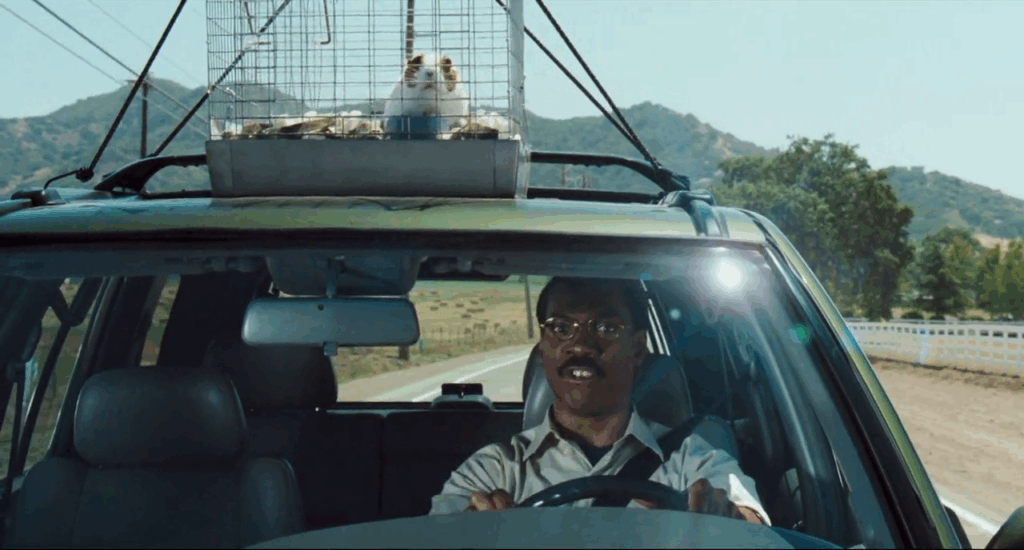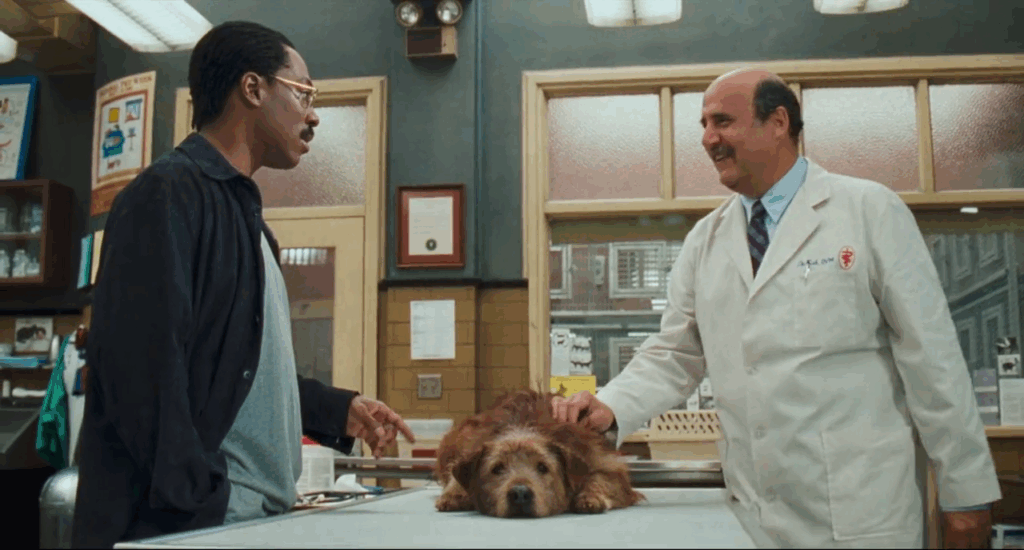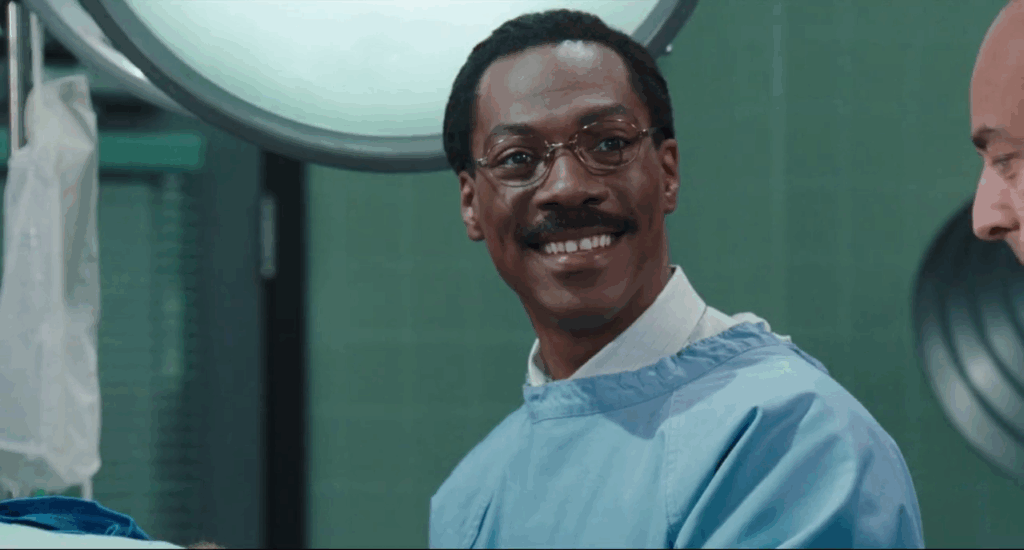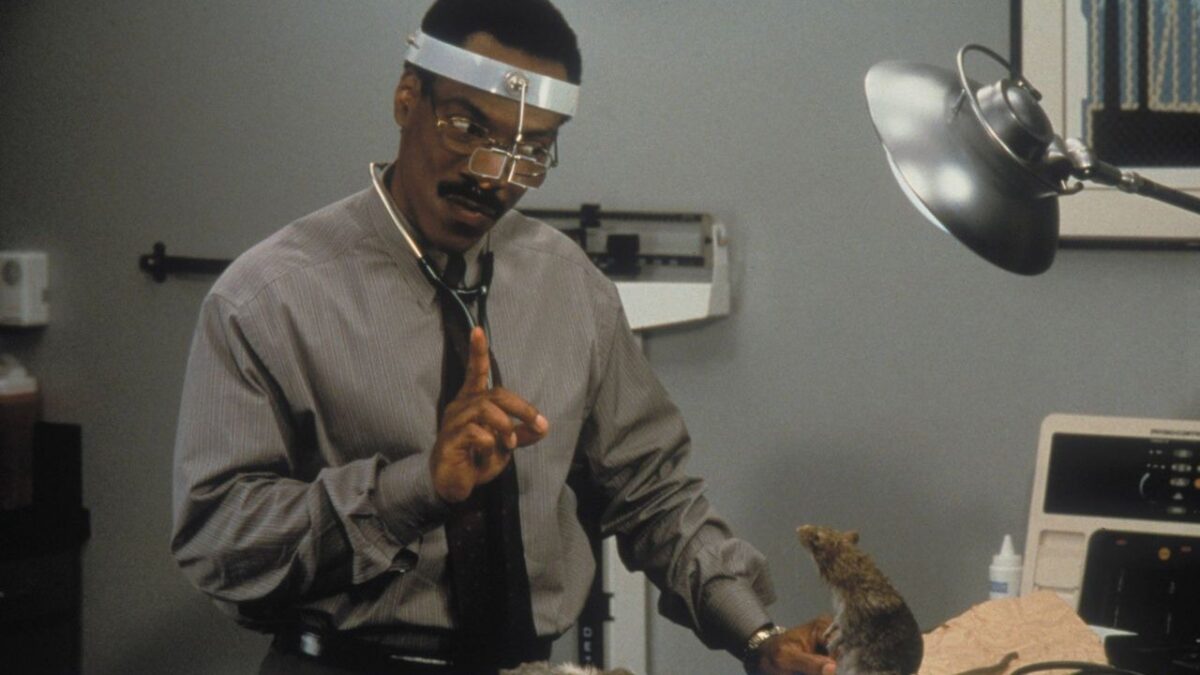Fart at the animals
We used to be a country. We used to hire aging comedians to make mid-budget live-action comedies for families. Nowadays we just cast them in DreamWorks and Illumination cartoons to voice, I dunno, a zebra or something. How boring is that? There was a time when flesh-and-blood Eddie Murphy talking to an animatronic guinea pig wasn’t just viable box office, it was a summer event (for tweens, at least). And he couldn’t just dial into a Zoom recording session; he had to work for it. Say what you will about the 1990s, but they knew how to churn out modest but effective blockbuster fluff aimed at families. Or, perhaps more likely, it’s my nostalgia speaking: Watching this, I can practically taste the over-buttered popcorn and the blasting air-conditioning at my local Regal theater when I was ten years old.
Doctor Dolittle (the 1998 version) finds cinema at the precipice of the CGI revolution (post-Toy Story, pre-Shrek). It combines the rubbery elasticity of practical creature effects with the early wobbles of CGI. The mode recalls Disney’s live-action oddities and musicals from earlier decades, like Darby O’Gill and the Little People. They didn’t have CGI, but they had the same wholesome, adventurous, rewind-the-VHS spirit. In fact, many of these ‘90s movies — Flubber, The Nutty Professor, George of the Jungle, and this — were revivals of IP, less out of reverence than as trust of tried-and-true premises that would tickle parents’ nostalgia and appeal to kids. The ‘90s versions of these stories are mostly springboards for marquee stars to mug, riff, and learn a heartfelt lesson from a talking animal or CGI creation, with an extra layer of fart jokes and post-Simpsons sarcasm.

Doctor Dolittle kicks off with five-year-old John Dolittle (Dari Gerard Smith) chatting it up with the family dog, blissfully unaware that this is not typical kindergarten behavior. When his canine-pal’s advice to get to know someone by sniffing their butt backfires, John’s dad (Ossie Davis) brings in a priest for an exorcism. The shame of the incident shuts down John’s animal-talking powers for three decades until a near-miss car accident with a dog named Lucky flips the switch back on. Grown-up John (Eddie Murphy) is now a high-functioning surgeon with a busy suburban family. But he finds himself hearing animal voices once more, and before long is doing medical consults for pigeons, rats, and a tiger with a debilitating migraine. Hijinks ensue. In the background is the future of John’s medical practice as he considers selling it to a big corporation to line his family’s pockets but lose touch with his compassion.
If you’re familiar with the books or have read my review of the 1967 film or 1928 shorts, you will notice that this really isn’t an adaptation of the Hugh Lofting books at all, but a total reinvention and modernization. That is fine by me. Despite my binge and coverage of films with the “Dolittle” moniker, I hold little reverence for the source IP. It works more as a talk-to-the-animals springboard than an actual story or character sketch, and it has a lot of baggage of imperialism and racial insensitivity that is understandable in the context of the publication of the book series but tough to reckon with decades later.
I’m inclined to give any live-action cartoon movie that puts forth a good faith effort (and brisk runtime) a baseline grade of C-plus (read: 4 out of 8 on the Is It Good? Scale). But I need not equivocate too much with Doctor Dolittle. It’s not the funniest movie of its ‘90s batch of films (Men in Black, probably), nor the benefactor of the most cheerful vibes (George of the Jungle, probably), but the screenplay has shape and more heft than I expected. That’s what gives it the tiniest bump into positive territory (and my favorite Doctor Dolittle adaptation), even with the unrefined humor.

Unlike the 1967 musical and the many Dolittle books upon which these are ostensibly based, the story here has a coherent internal arc for the title character. It’s a solid blend of hijinks and character development. This isn’t strictly about cavorting with a pushmi-pullyu (though one does show up briefly as a little nod). Instead, it’s about a man confronting his inner weirdness and growing stronger from it. It’s a classic self-actualization story, but thoughtfully rendered given the stakes and tone. The story offers a tidy thematic overlap between John’s rediscovery of his gift and the film’s corporate B-plot, in which he has to decide whether to sell his medical practice to a soulless conglomerate. And while the film doesn’t make a big point of it, it even offers a subtle charge in seeing a Black doctor navigating a white corporate world, his difference treated as a burden until it becomes a strength. (It is much sharper in this regard than Ghost Dad.)
But the real draw here is, of course, the talking animals. Director Betty Thomas, with a boost from the Jim Henson Creature Shop, nails the look and spirit, with effects that still mostly hold up. It’s nearly Babe-tier in terms of animal expressiveness, of animatronics and CGI that blend seamlessly. In some moments I honestly wasn’t sure whether I was looking at a puppet, a digitally enhanced dog, or just a very well-trained collie. The production MVP is Lucky, voiced by Norm Macdonald, whose droll delivery is welcome. (Macdonald continued voicing Lucky through all four of this movie’s sequels, including the DTV releases.)
I won’t pretend the film is a work of high art or a comic masterpiece. Its main joke is: Butts are funny. (And what’s wrong with that? Butts are funny. They smell bad. They are big and fleshy and slightly awkward. Even as children, we are inexplicably drawn to them.) That’s the flip side of being a shameless ‘90s family comedy: The script is absolutely riddled with body part and function gags calibrated for maximum second-grader satisfaction. Subjectively, I find it toes right up to “obnoxious” without entirely crossing over that line, though your mileage may vary.

One of the most surprising choices the film makes is placing John Dolittle as a straight man. Eddie Murphy gets to be funny, but it’s remarkably restrained relative to the likes of The Nutty Professor and Norbit. Even stranger still, Murphy actually acts a little: He plays John as a man teetering on the edge, trying to keep his life together while animal chaos stews around him. It’s a surprisingly unfussy and assured lead performance, though not exactly Oscar material.
Despite negative reviews, Doctor Dolittle was the sixth-highest grossing film in the U.S. in 1998. We tweens craved these kinds of movies. Inevitably, Fox made a sequel and a string of lower-rent, direct-to-video spin-offs. It’s no long-lost gem, but I find Doctor Dolittle to be weirdly satisfying, though I admit I cannot entirely separate it from my nostalgia for its ilk of films. It is a time capsule of an era when a family movie required actual sets, actors, and production. It has a solid R&B soundtrack. It is 88 minutes long. Make America greenlight mid-budget family comedies again.
Is It Good?
Good (5/8)
Dan is the founder and head critic of The Goods. Follow Dan on Letterboxd. Join the Discord for updates and discussion.


4 replies on “Doctor Dolittle (1998)”
Firstly and most importantly – if you have seen trailers for NAKED GUN 2025 and laughed even a little, watch the whole thing and you will laugh a very great deal (My Mum, Dad and I all went this weekend – we all agreed it was even better than the trailers, because the trailers barely hint at what was to come).
Secondly, I remember DOCTOR DOOLITTLE (Murphy) with fondness, but if we’re talking real 1990s/2000s Family Comedy Nostalgia it’s LIAR LIAR all the way.
I was actually planning to see Naked Gun with my wife today or tomorrow, but I’m currently stuck at home with COVID. I will definitely watch it.
My dear fellow, I do hope you’ll get well soon: please allow me to apologise for having inadvertently touched on a sore spot and please allow me to send Best Wishes once again to yourself & Mrs Dan.
ED – No worries at all, and thanks so much for the caring words, I’m already back up to speed, but I’m going to quarantine a couple more days so as not to spread the plague! Here’s to many a theatrically released comedy in the year to come.